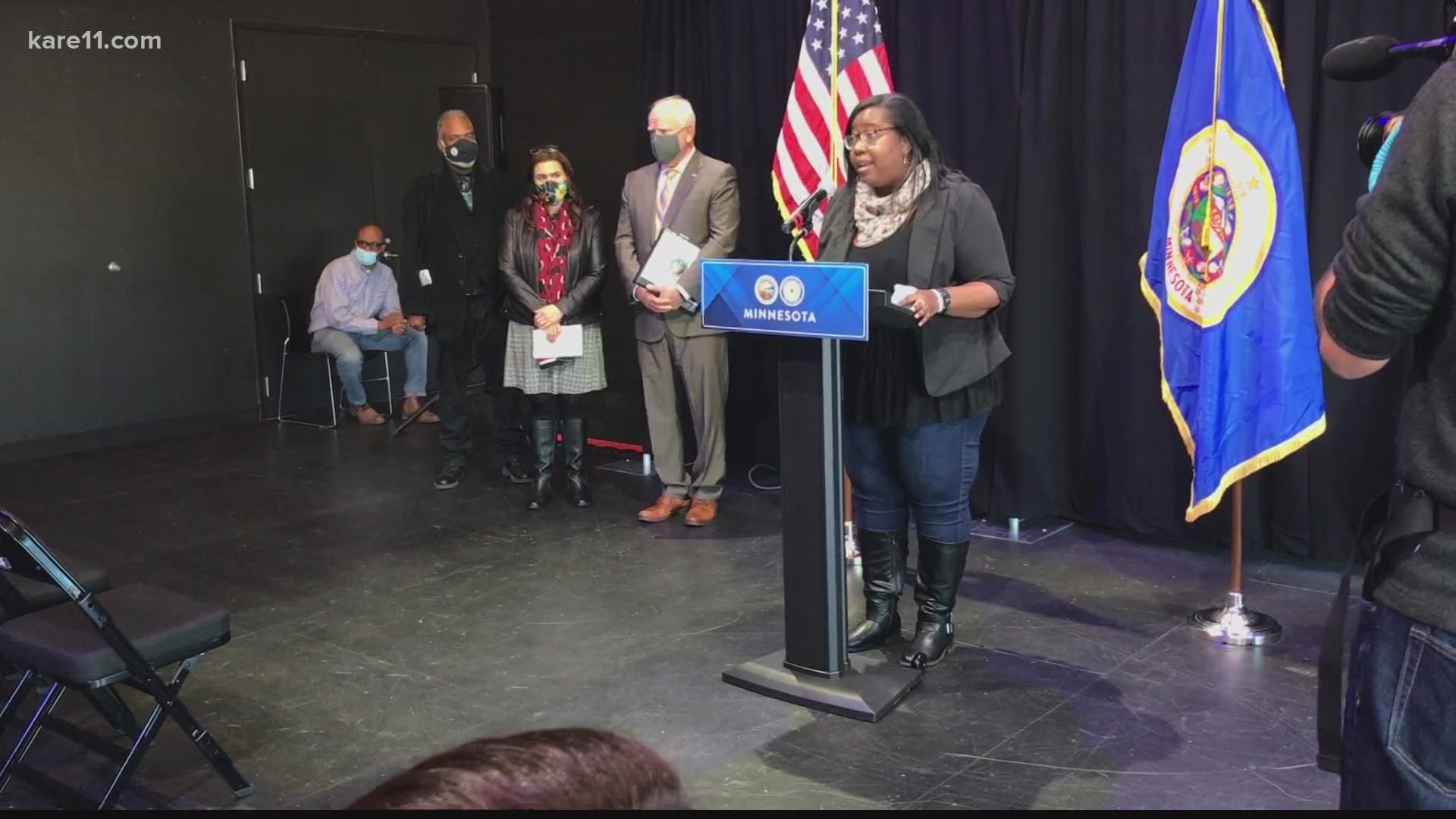MINNEAPOLIS — Editor's note: The video above first aired on KARE 11 in November of 2021.
Newly released findings from the Missing and Murdered African American Women (MMAAW) Task Force show how the effects of systemic racism and inequality impact the lives of Black women, particularly in Minnesota.
“This task force is a first-in-the-nation initiative to examine the systemic causes of violence against African American women and girls and develop recommendations to reduce and end the violence,” said Gov. Tim Walz in a statement. “With better data and increased awareness as a result of this report, we can move forward with effective and targeted strategies to support, protect, and heal their communities.”
Some key points in the report include:
- While only 7% of the population of Minnesota is Black women, 40% of domestic violence victims in the state are Black women.
- Black women in Minnesota are nearly three times more likely to be murdered than white women.
- Homeownership disparities in Minnesota affect single-mother households from communities of color the most.
- Black women experience the highest eviction rates.
- While Minnesota is one of the healthiest states in the nation, at the same time, it is home to some of the worst health disparities.
- Black Minnesotans are more likely to live in environments with poor air quality; death due to asthma is four times higher for Black Minnesotans than white Minnesotans.
- In the COVID-19 pandemic, Black and Latinx Minnesotans “have the highest age-adjusted rates of hospitalization.
- In Minnesota, the maternal mortality rate for Black mothers is 2.3 times that of white mothers, and the infant mortality rate for Black babies is more than twice that of white infants.
“For generations, Black women and girls have experienced disproportionate violence and have been collectively working to raise awareness and end this injustice,” said Lt. Gov. Peggy Flanagan in a statement. “We are grateful for the leadership of Representative Ruth Richardson and to the members of this Task Force and all of the people who contributed their expertise, time, and valuable insight. We want to make their voice heard. I am incredibly proud of the work and care that have informed these incredibly important findings.”
With the findings, the authors of the report developed recommendations to take action to address these disparities. Some of the recommendations include creating and funding spaces and resources specifically to serve Black women and girls; establishing an official Missing and Murdered African American Women Office; developing anti-racist training for professionals; hiring more Black staff; increasing access to services; and identifying pathways to emergency and long-term housing.
The task force, which is comprised of state lawmakers, health and public safety officials, and members of local law enforcement and other organizations, was founded in 2021 by the Minnesota Legislature, and its efforts were coordinated by the Department of Public Safety.
Rep. Ruth Richardson (DFL-Mendota Heights) is credited with championing the bill in the legislature that led to the creation of the task force. At the time it was launched, she said, "We are going to leave this task force with a blueprint — a blueprint for change; a blueprint to bring Black women and girls back home."
The group based its findings on extensive research and interviews with Black women and girls in partnership with Research in Action, a Black, queer, female-led, multi-racial and gender-diverse corporation aimed at finding solutions for social justice.
FULL REPORT:
Watch more local news:
Watch the latest local news from the Twin Cities in our YouTube playlist:

